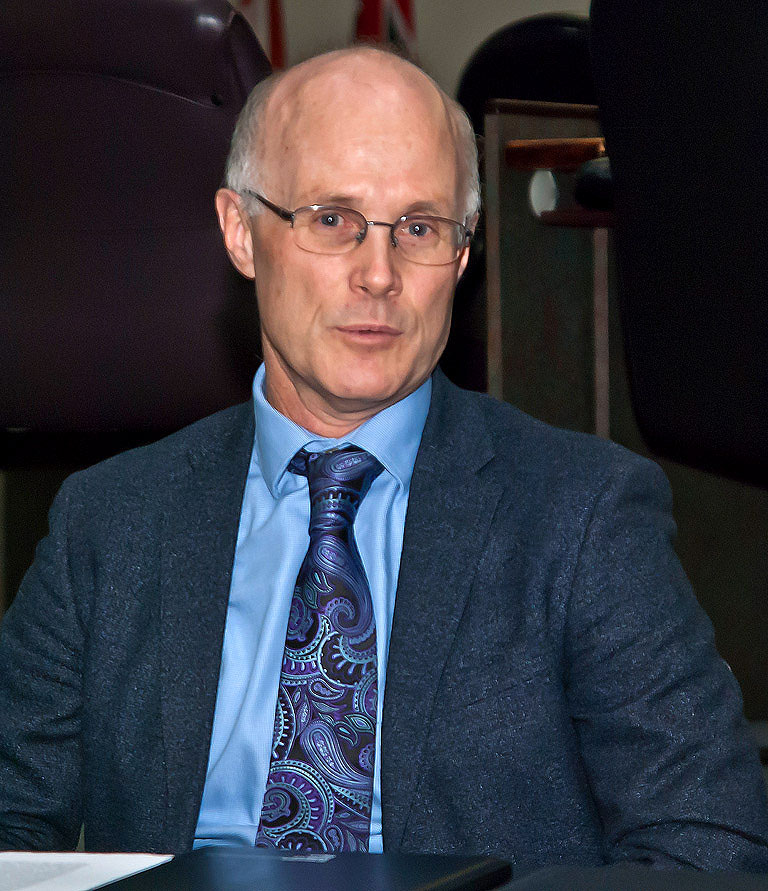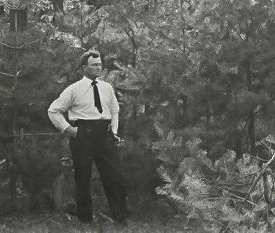Dr. Charles Gardner On COVID And Climate Change
By Gord Ball – Special to SUNonline/Orillia
Dr. Charles Gardner, Medical Officer of Health for the Simcoe Muskoka District Health Unit, spoke recently to Sustainable Orillia about the transition from facing the challenge of the pandemic to addressing the challenge of climate change. In spite of the enormous time and effort he has devoted to facing down COVID-19 in our region, Dr. Gardner (who became chair of the Council of Ontario Medical Officers of Health June 9) is optimistic we have learned how to meet the even bigger challenge of our time – the climate emergency.
How does Gardner compare the relative threats of COVID-19 and climate change to the health of people in our region?

“Certainly COVID-19 has been the more immediate threat, manifest over days and weeks compared to the climate threat. COVID is now coming under control, yet we may still see more activity. It’s not over internationally and will probably go on over several more years in parts of the world. We’ve had a better course in Canada and Ontario thanks to our better control measures,” he said.
“In parallel with COVID-19, the impact of climate change is also manifesting now, but it’s increasing more gradually over time. Because of the slower pace of climate change, it doesn’t get the same attention. We’re more adept at dealing with immediate threats. Over time climate change will have a much bigger impact than COVID-19 on the sustainability of our society if we aren’t willing to address it.”
Gardner believes those of us with the least resources are likely to have the most significant health implications because of the climate threat.
Vulnerable populations, people with lower income, the socially and economically disadvantaged, and those with medical conditions are the most at risk. A few years ago we conducted an assessment in Simcoe County and looked ahead to the 2080s in 30-year installments. We saw that a serious risk factor is the projected temperature change. For example, we’ll see a significant increase in tropical nights (defined as 20 degrees centigrade or more). Sustained periods of heat will put people at a greater risk of mortality, especially those living in “heat islands” such as rental accommodation with no air-conditioning. More people will suffer from heat exhaustion – particularly those with chronic health conditions – than we’ve seen in the past. Drier summers, with drought punctuated by more frequent and sustained intensive rainfall, will mean we’ll have to make adjustments to our urban design,” Gardner said.
“Adverse weather events such as sudden and dramatic downpours, high velocity winds, and flooding will lead to more frequent destruction of homes and properties. The resultant displacement of people from their homes will have an impact on mental health and physical well-being. And, of course, people can be killed by these weather events – drowning or hit by falling trees due to high winds. These situations will also have an impact on mental health, which is closely linked to other diseases and overall mortality. All this will be more likely among people of lower income in poor living conditions.”
“(For example) milder winters will mean an increase in vector-borne disease migrating north and an increase in mosquito-borne illness and tick-borne conditions such as Lyme disease. Climate change will also lead to water-borne diseases. We can expect an increase in the frequency of blue-green algae blooms in lakes, rendering the affected source water unusable for drinking or other uses, and potentially endangering the municipal water supply in affected areas. Blue-green algae releases a toxin which is heat stable, boiling doesn’t make things better, which causes an inflammatory reaction on contact and with consumption.”
Are there opportunities because of the pandemic, are there lessons to learn when it comes to facing this climate challenge?
“As I turn my attention to our recovery, I am beginning to see this as an opportunity to embed in our recovery a response to climate change a green and just recovery moving in the direction we need to go. We should find inspiration in this recovery to address this next major challenge to our society and our species. We’ve had considerable success with the pandemic; vaccines developed and deployed within a year, rapid changes to reduce transmission, leadership from governments and public support. We have shown that we can respond to a major threat successful,” Gardner said.
“For example, one specific thing, we have reduced the amount of travel and yet we continued to work. Our ability to embrace remote work was astounding. Some of that will no doubt remain. It’s been tremendously efficient. Some communities have augmented their active transportation to reduce COVID transmission. We have an opportunity to highlight that and embed it in our climate approach.”
Gardner thinks local action groups are important to the process of mitigating effects of climate change. They can’t do it alone. Governments, organizations and everyone need to be on the same page and work together.
“Sustainable Orillia is doing important work. I urge people and governments to take every opportunity to engage in discussion about climate change and a green recovery, and to make a conscious and deliberate attempt to discuss it openly. One needs to be careful of the dragons of inaction who make arguments that lead to inaction when what we need is a willingness to tackle this great challenge as we, as a species, have tackled many other challenges in the past.

“Personally, I’m taking inspiration from the life of Edmund Zavitz who is the father of reforestation in southern Ontario in the first half of the 20th century,” Gardner said.
Zavitz was the chief forester of Ontario, deputy minister of forests, and director of reforestation. His first reforestation project happened in 1905. Much of Ontario had been stripped of trees resulting in numerous problems. One project, the Niagara Escarpment, once a wasteland, is now a UNESCO World Biosphere. With premiere E.C. Drury’s backing over 1.3 million trees were planted in Simcoe County between 1922 and 1927.
(Photos by Swartz – SUNonline/Orillia: Images Supplied)




